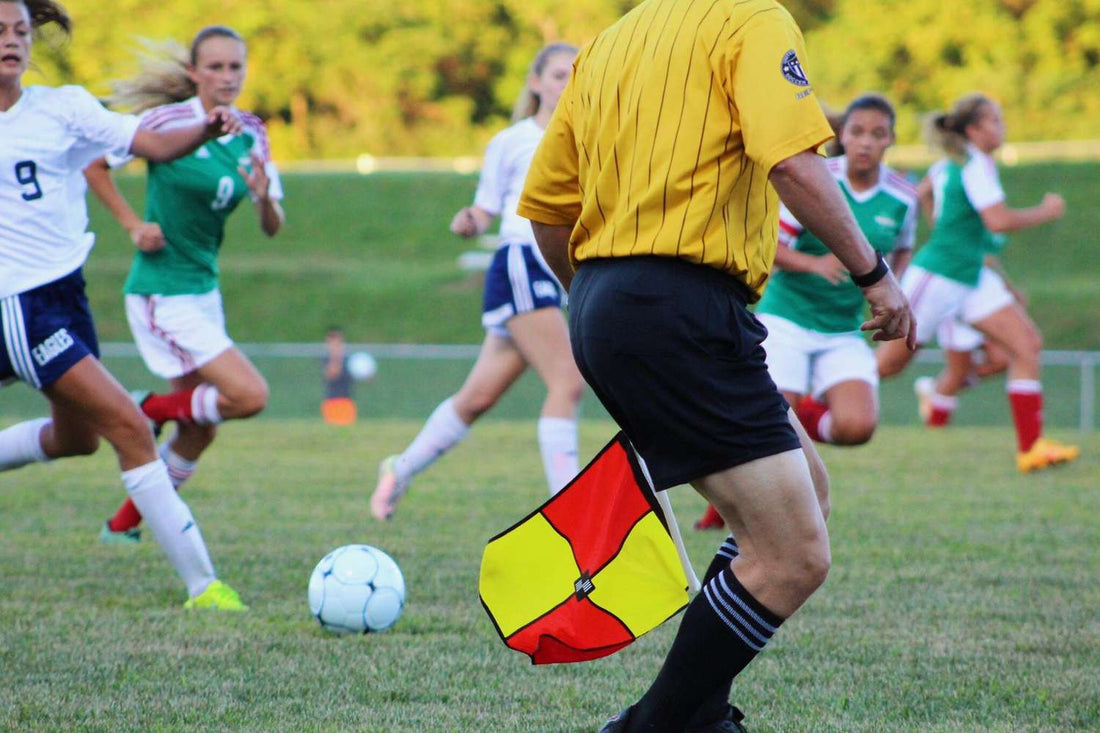If you're a football beginner or find yourself puzzled by many complicated rules while watching matches with family and friends, then today's blog is just right for you. We've lined up some of the key rules and regulations of football and we'll be breaking them down in the most straightforward way for you to understand and learn.
Quickest to learn Rules and Regulations of Football
1. Offside Rule
I'm sure you've experienced this before: when players have a great opportunity, then suddenly be stopped by the referee blowing the whistle, and you're left wondering why and when they committed a foul. And it happens many times in a game. Actually, this is one of the most important rules in football – the offside rule.
The offside rule, can seem daunting at first but is relatively simple to grasp.
Imagine a virtual line drawn across the field parallel to the opponent's goal line. A player is considered offside if they are nearer to the opponent's goal line than both the ball and the second-last opponent when the ball is played to them by a teammate. Make it even simpler, a player cannot position themselves closer to the opponent's goal line than the defenders when the ball is passed to them. Understanding this rule will help you appreciate the strategic positioning and timing of players during attacks.

2. Fouls and Free Kicks
Fouls are infractions of the rules committed by players during the game. Common fouls you might have seen include tripping, pushing, or handling the ball with hands, excluding the goalkeeper within their penalty area. When a foul occurs, the opposing team is awarded a free kick. Free kicks can be either direct or indirect. In a direct free kick, the kicker can score directly from the kick, while in an indirect free kick, another player must touch the ball before a goal can be scored. Recognizing fouls and understanding their consequences adds another layer of excitement to the game.

It's worth noting that in most cases, when a player commits a foul and the opposing team is awarded a free kick, the ball must be placed and the player must wait for the referee's whistle before taking the kick. Sometimes, the referee may choose not to stop play for a momentary advantage to the attacking team, or allow the attacking player to take a quick free kick.
3. Yellow and Red Cards
Yellow and red cards are used by referees to maintain discipline and fairness on the field. A yellow card serves as a warning for misconduct, such as reckless tackles or dissent towards the referee. If a player receives two yellow cards in the same game, they are shown a red card and ejected from the match. A straight red card can also be issued for serious foul play or violent conduct, resulting in immediate expulsion. Knowing the implications of yellow and red cards enhances your understanding of player behavior and its impact on the game's dynamics.
According to new regulations, a player who receives a straight red card will be suspended for two matches, with additional suspension determined based on the severity of the foul committed. However, in the case of receiving two yellow cards resulting in a red card, the player will be suspended for one match.

4. Throw-Ins and Goal Kicks
When the ball goes out of bounds along the touchline, the opposing team is awarded a throw-in. To perform a throw-in, a player must use both hands to throw the ball back into play from behind their head while keeping both feet on the ground. Goal kicks, on the other hand, are awarded to the defending team when the ball crosses the goal line after being last touched by an attacker. Understanding these basic restarts ensures you won't miss a beat when the action resumes.

5. Penalty Kicks and Shootouts
Penalty kicks are awarded for certain fouls committed within the penalty area, providing an excellent opportunity for scoring. Penalty kicks are taken from the penalty spot, 12 yards from the goal line, with only the goalkeeper defending the goal. Additionally, in knockout competitions where a winner must be determined, matches may proceed to a penalty shootout if tied after regular time. Each team takes turns attempting penalty kicks, with the team scoring more goals declared the winner. Knowing the rules surrounding penalty kicks and shootouts adds drama to crucial moments in the game.









